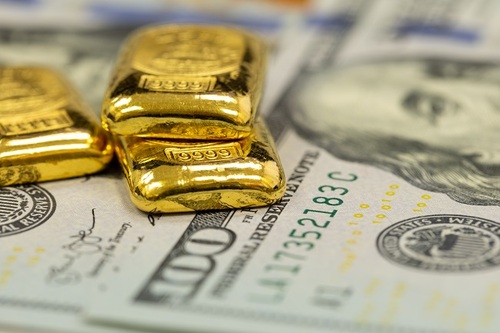
The gold market needs another catalyst to drive ETF inflows for stainable higher prices

While October was a historic month for the gold market as the precious metal saw a record-high closing price for the month, more is needed to create a sustainable bid in the marketplace, according to analysts at the World Gold Council.
In October, gold prices rallied nearly 7%, closing out the month at $1,997 an ounce. Since then, the precious metal has struggled to hold its ground at around $2,000 an ounce. December gold futures last traded at $1,974 an ounce, down 0.73% on the day.
In their latest monthly commentary, analysts at the World Gold Council noted that while geopolitical uncertainty due to the conflict between Israel and Hamas drove speculative safe-haven demand higher, long-term investors are still reluctant to jump into the market according to weak price action in gold-backed exchange-traded products (ETFs).
“A sustained rally in gold will, in our view, require either continued or worsening political risk, a peak in bond yields and the US dollar, or an equity bear market combined with revived recession risks,” the analysts said.
Although the gold market needs another catalyst for a sustainable rally above $2,000 an ounce, October’s price action does show how much potential the gold market has as sentiment continues to shift.
“COMEX net shorts reversals are a historically reliable positive signal for gold prices and have tended to lead ETF flows,” the analysts said. “It is possible that with a full house of investment behind it, including ETFs and futures, gold could break out of the broad range in which it has traded since the middle of 2020.”
The weakest pillar in the gold market remains investment demand in gold-backed ETFs; however, the WGC said that October flows could signal a bottom in the market.
Although the gold market saw its fifth consecutive month of outflows, the pace was a lot slower compared to September. The WGC said 37 tonnes of gold, valued at $2 billion, flowed out of global gold-backed ETFs last month.
However, the WGC noted that assets under management increased by 6% due to gold’s rally last month.
Year to date, holdings in gold-backed ETFs have dropped by 225 tonnes, valued at $13 billion.
According to analysts at the WGC, the Federal Reserve’s restrictive monetary policy remains a critical factor for gold as outflows in North American markets led the broader trend.
According to the WGC, North American-listed funds saw outflows of 27.5 tonnes, valued at $1.5 billion.
“Surging Treasury yields, the opportunity cost of holding gold, early October overshadowed safe-haven demand from geopolitical risk and equity volatility later in the month. With the economy performing surprisingly well and inflation remaining sticky, the 10-year US Treasury yield touched 5% during the month –the first time since July 2007,” the analysts said.
Across the Atlantic, the WGC said that European-listed funds saw outflows of 11 tonnes, valued at $622 million.
“We believe stabilizing yields, as the European Central Bank (ECB) paused its ten-month rate hiking spree and the region’s inflationary pressure continued to slide, geopolitical risks and the rising gold price helped limit losses,” the analysts said.
Asian markets, which have been a pillar of strength in global ETFs, saw inflows of 1 tonne, valued at $81 million.
“Between January and October, Asia funds attracted US$1bn (+15t), the only region experiencing positive flows, mainly driven by China and Japan,” the analysts said.
Finally, other markets, led by Turkey, also saw inflows of 1 tonne.
As to what turns the tide for gold, the WGC said that investors might need to see lower equity markets to spur renewed interest in the precious metal.
“Earnings projections remain quite rosy, but prices, particularly the Nasdaq, are rolling over. The index is down more than 10% already from its mid-year peak during what is supposedly the seasonally strongest period. A greater than 20% drop from the peak – a ‘bear market’ – could spur additional interest in gold from investors, concerned perhaps that equity dips are no longer worth buying,” the analysts said.
 China continues to dominate the gold market with a 12-month buying spree, adding 23 tonnes in October
China continues to dominate the gold market with a 12-month buying spree, adding 23 tonnes in October
By
Neils Christensen
For Kitco News
Tim Moseley
